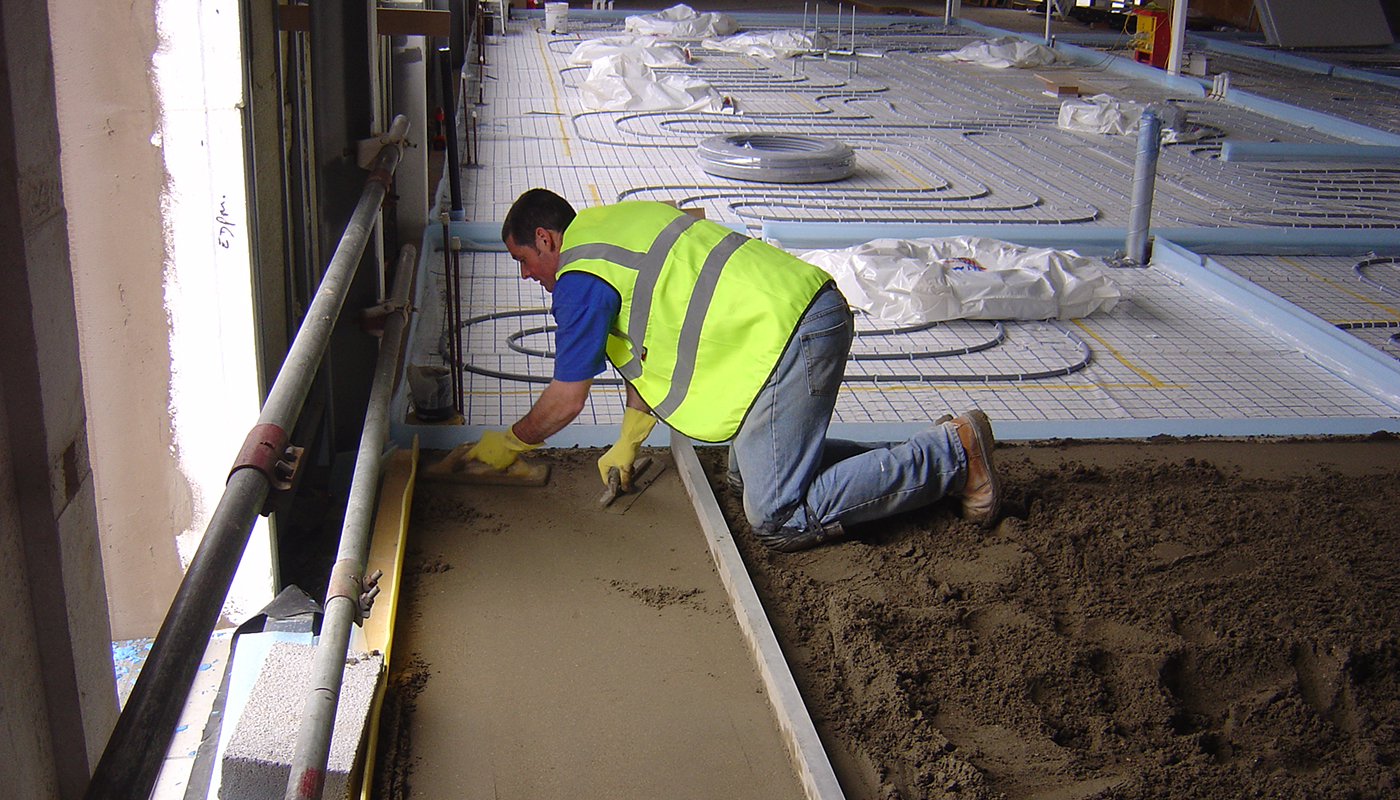
Traditional sand/ cement floating screeds are suitable for application at a minimum thickness of 75mm for heavy and medium duty screed applications (Category A & B) and at a minimum thickness of 65mm for light duty residential use (Category C), see BS 8204-1 Section 6 – Design Considerations for further explanation of floor usage categories. When the overall depth of the floor construction is limited by headroom or weight constraints, typically in refurbishment projects, polymer modified floating screeds are often specified. Polymer modification of screeds with Ronafix admixture increases the design flexural strength to ≥ 9N/mm2 and the design tensile strength to ≥ 4N/mm2, allowing screeds to be laid thinner. Polymer modification also reduces permeability and shrinkage. The strength of insulation boards, adequate compaction of screeds and allowances for sub-floor and screed tolerances all require particular attention when thin floating screeds are specified.
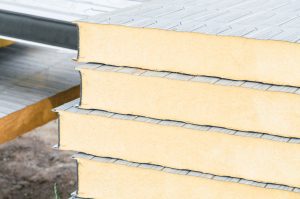 Insulation Boards
Insulation Boards
When selecting an insulation board for use with a thin screed, consideration should be given to the increased load transmission to the board through a thinner screed and a board with sufficient strength to compensate for the increased imposed loads should be chosen; deformation of insulation under point loads is likely to damage a screed. 150kPa (0.15N/mm2) boards are popular for floating screed application and are adequate for residential use at traditional floating screed thickness but may not be strong enough for thin floating screeds, particularly under high point loads. The compressive strength of insulation boards is typically expressed in kilopascals; it is important to note that compressive strength of boards composed of materials such as polystyrene and urethane is tested at 10% compression in the board, meaning that at the maximum design load a 100mm board would deform by 10mm. There is no data published by manufacturers for compressive strength at zero compression but it will be considerably reduced. At least one manufacturer shows compressive strength at 10% & 2% compression, the compressive strength of their 250kPa board reduces to 125kPa at 2% compression and the strength of their 700kPa board is reduced to 250kPa at 2% compression. Products such as Foamglas cellular glass insulation exhibit higher compressive strength without deformation of the board; the Foamglas board with the lowest loadbearing capacity has a compressive strength of 800kPa or 0.8N/mm2.
Screed Compaction
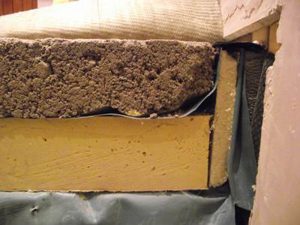 It is always important to ensure adequate compaction of screeds, when laying floating screeds the resilience of polystyrene and urethane boards makes compaction more difficult, even in thinner screeds. The addition of sufficient gauging liquid is vital for adequate compaction and to ensure that there is enough gauging liquid to fully hydrate the cement. A simple test to determine the correct screed consistency is to make a ball of the mixed material, when the ball is squeezed there should be no free liquid expelled and when the ball is pulled apart, there should be no crumbling of the mortar.
It is always important to ensure adequate compaction of screeds, when laying floating screeds the resilience of polystyrene and urethane boards makes compaction more difficult, even in thinner screeds. The addition of sufficient gauging liquid is vital for adequate compaction and to ensure that there is enough gauging liquid to fully hydrate the cement. A simple test to determine the correct screed consistency is to make a ball of the mixed material, when the ball is squeezed there should be no free liquid expelled and when the ball is pulled apart, there should be no crumbling of the mortar.
The image is of a poorly compacted screed which was laid too dry. The image shows the screed containing voids and with evidence of incomplete cement hydration. At the edge of the screed a large void has been left, leaving the screed unsupported at the edge.
Tolerances
Nominal screed thickness should be the sum of minimum thickness + sub-floor levels variation + screed surface regularity. A screed laid to SR2 surface regularity tolerance may need to be ≥ 15mm thicker than the minimum thickness to avoid the risk of high spots in the sub-floor coinciding with low spots in screed level.
Ronacrete Products for Floating Screeds
Ronafix Underfloor Heating Screed Admixture, Ronafix Pre-packed Floating Screed and RonaScreed Flowable Underfloor Heating Screed are all suitable for thin floating screeds. Minimum floating screed thickness is 35mm and minimum heated floating screed thickness with 16mm underfloor heating pipes is 40mm, larger pipes will require a greater minimum screed thickness; refer to technical data sheets for further information. Note that minimum screed thickness is for Category C screeds and thickness may need to be increased if the floor is to be subjected to higher loads than those that would be imposed in a typical domestic application. Nominal screed thickness should reflect evenness of the base and allowable surface irregularity in the screed.
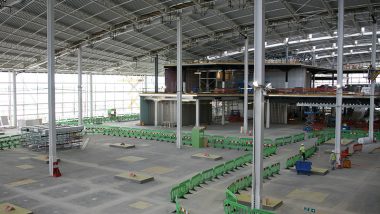
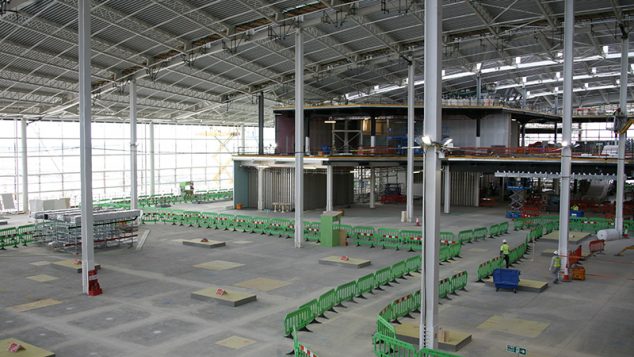
RonaScreed FastDry Prompt – benefits and drying
RonaScreed FastDry Prompt (formerly RonaScreed 8 Day Overlay) is so-called because it is a fast-drying screed additive which enables a 50mm thickness of 3:1 sand/ cement screed to be overlaid with moi ...
Read more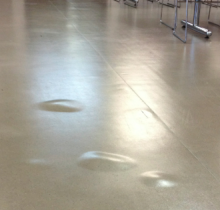
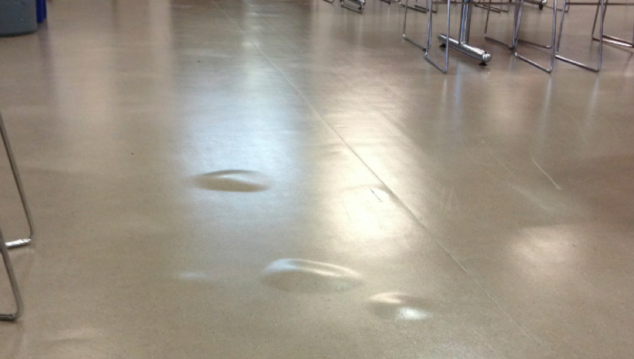
BS 8204-1 “Concrete bases and cementitious levelling screeds to receive floorings — Code of practice” section 6.11.1 suggests the following calculation for drying of screeds with no fast drying additi ...
Read more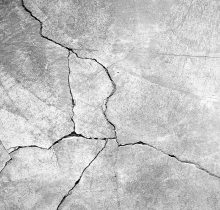
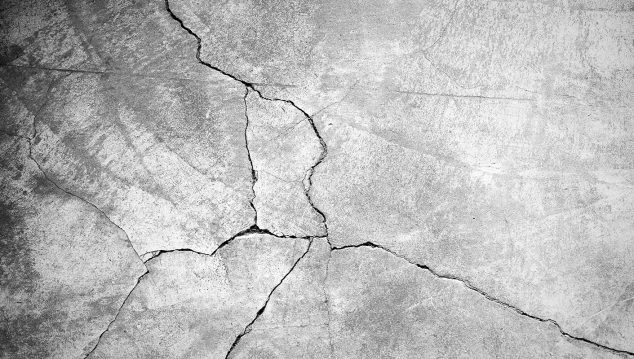
Avoidance/ Mitigation Of The Effects Of Common Forms Of Cracking In Cementitious Screeds
Aggregate is usually 0–4 mm and is mixed with cement in the ratio of 1:3 or 1:4 cement to sand, depending on strength requirements and drying requirements. For total screed thicknesses in excess of 50 ...
Read moreHere to help...